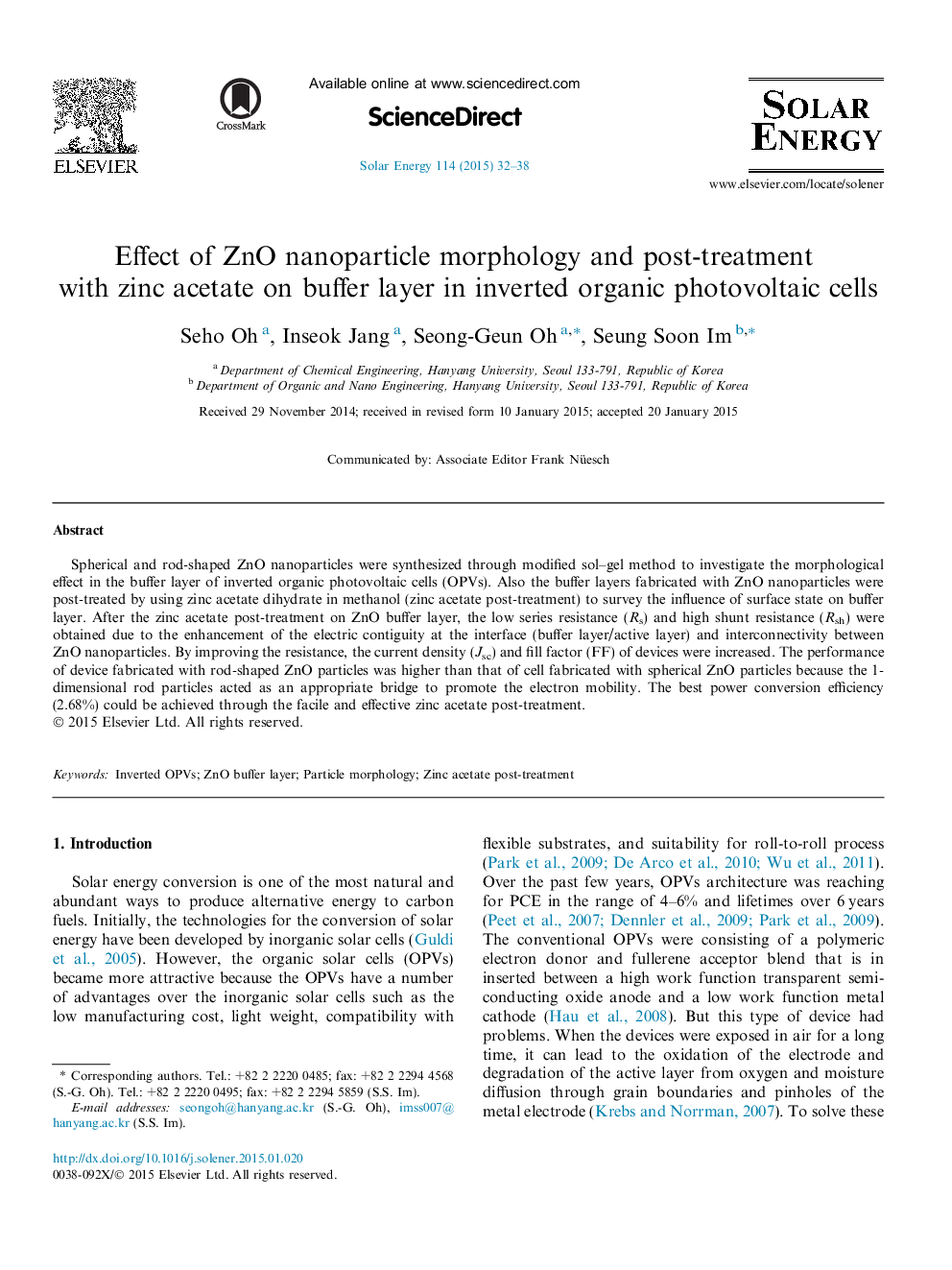| Article ID | Journal | Published Year | Pages | File Type |
|---|---|---|---|---|
| 7937933 | Solar Energy | 2015 | 7 Pages |
Abstract
Spherical and rod-shaped ZnO nanoparticles were synthesized through modified sol-gel method to investigate the morphological effect in the buffer layer of inverted organic photovoltaic cells (OPVs). Also the buffer layers fabricated with ZnO nanoparticles were post-treated by using zinc acetate dihydrate in methanol (zinc acetate post-treatment) to survey the influence of surface state on buffer layer. After the zinc acetate post-treatment on ZnO buffer layer, the low series resistance (Rs) and high shunt resistance (Rsh) were obtained due to the enhancement of the electric contiguity at the interface (buffer layer/active layer) and interconnectivity between ZnO nanoparticles. By improving the resistance, the current density (Jsc) and fill factor (FF) of devices were increased. The performance of device fabricated with rod-shaped ZnO particles was higher than that of cell fabricated with spherical ZnO particles because the 1-dimensional rod particles acted as an appropriate bridge to promote the electron mobility. The best power conversion efficiency (2.68%) could be achieved through the facile and effective zinc acetate post-treatment.
Keywords
Related Topics
Physical Sciences and Engineering
Energy
Renewable Energy, Sustainability and the Environment
Authors
Seho Oh, Inseok Jang, Seong-Geun Oh, Seung Soon Im,
